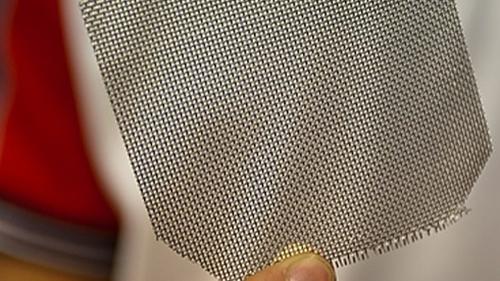Fog-Harvesting Mesh Provides Clean Drinking Water
May 28, 2014

Remember when you were a kid and opened your mouth to drink water droplets on a foggy day? Me neither. If you live in the desert, however, you may drink fog water to your heart's content for years to come. MIT has enhanced its fog harvesting techniques to bring the people of the desert the cleanest fog water for miles. It's another simple idea that I think will inspire you.
MIT researchers developed a process through which people "harvest" potable water by collecting water droplets from fog. MIT's spin on traditional methods is expected to increase efficiency 500 times over, bringing clean, drinkable water to the arid regions that need it most.
Scientists at MIT have partnered with researchers in Chile to test its new fog-harvesting technique in the Atacama Desert. The new method takes inspiration from natural fog harvesters, such as beetles and plants, and seeks to collect up to three gallons of water for every 10 feet.

Fog harvesting is achieved by installing a flat, fabric mesh screen at an angle above the ground. The mesh seeks to enhance condensation of the water droplets present within fog, which often lingers above the sand in coastal deserts. The water droplets stick to the mesh, and are then collected and used for agriculture or as drinking water.
The amount of water the mesh collects is based on three key factors: the size of the filaments, material used, and amount of the space between filaments. Most structures leave much to be desired, as they are made from a thick, inexpensive plastic-like substance and are spaced generously, resulting in the collection of only 2% of the water droplets present.
MIT's contribution to the technology comes from creating a mesh that is permeable versus solid. Permeable structures, like a window screen, create increased condensation, resulting in the collection of at least five times more water.
With this, MIT researchers opted for stainless-steel filaments, not much thicker than human hair, that are much closer together. The mesh is also coated with a slick chemical treatment, causing the collected droplets to slide down the structure and be collected in a large bin more easily, also known as contact-angle hysteresis.
The experiment will run for a year to determine how climate change affects the harvest. The team of researchers also plans on continuing to enhance its technology, in the hopes that it will greatly improve the lives of those who live in extremely arid regions. Operational with nearly no overhead expense, the technology can be a reliable resource for clean drinking water and water to sustain crops in the desert.
Related posts:
About the Author(s)
You May Also Like





